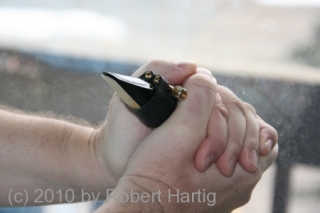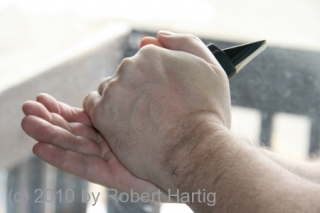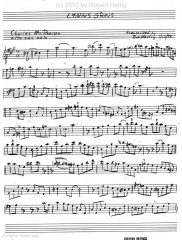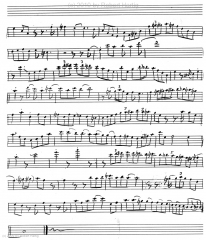As I’ve continued to spend time incorporating the augmented scale into my working vocabulary as a jazz saxophonist, I’ve made one recent discovery which simplifies its application, at least in part. It is this: the same augmented scale used with the tonic chord in a major key also works beautifully for the altered dominant.
For example, in the key of C, use the C augmented scale for both the tonic C Maj 7 and the G+7(b9, #9). Just keep in mind how you handle the root of the scale when the G dominant is sounding, same as you would do if you were playing a G Mixolydian mode.
The reason this same-scale approach works is because every augmented scale, being symmetrical by design, is actually three different scales spaced a major third apart, all sharing the same notes and interval relationships. The C augmented scale also functions as an E and an Ab augmented scale, and each version works nicely with an altered dominant seventh chord built on its leading tone. Thus the Ab augmented scale is the scale of choice for imposing the augmented sound on the altered G7 chord.
Try the above tip with a blues as well. It works fine, adding color and enough “wrong notes” to sound right, providing you bring the free-floating augmented sound back to earth by resolving it properly to a chord tone and maybe adding a nice, earthy dash of the blues scale.
If you have other ways in which you like to use the augmented scale, please drop a comment and share them. And check out my jazz page for more articles and transcriptions geared for the practicing jazz musician.






